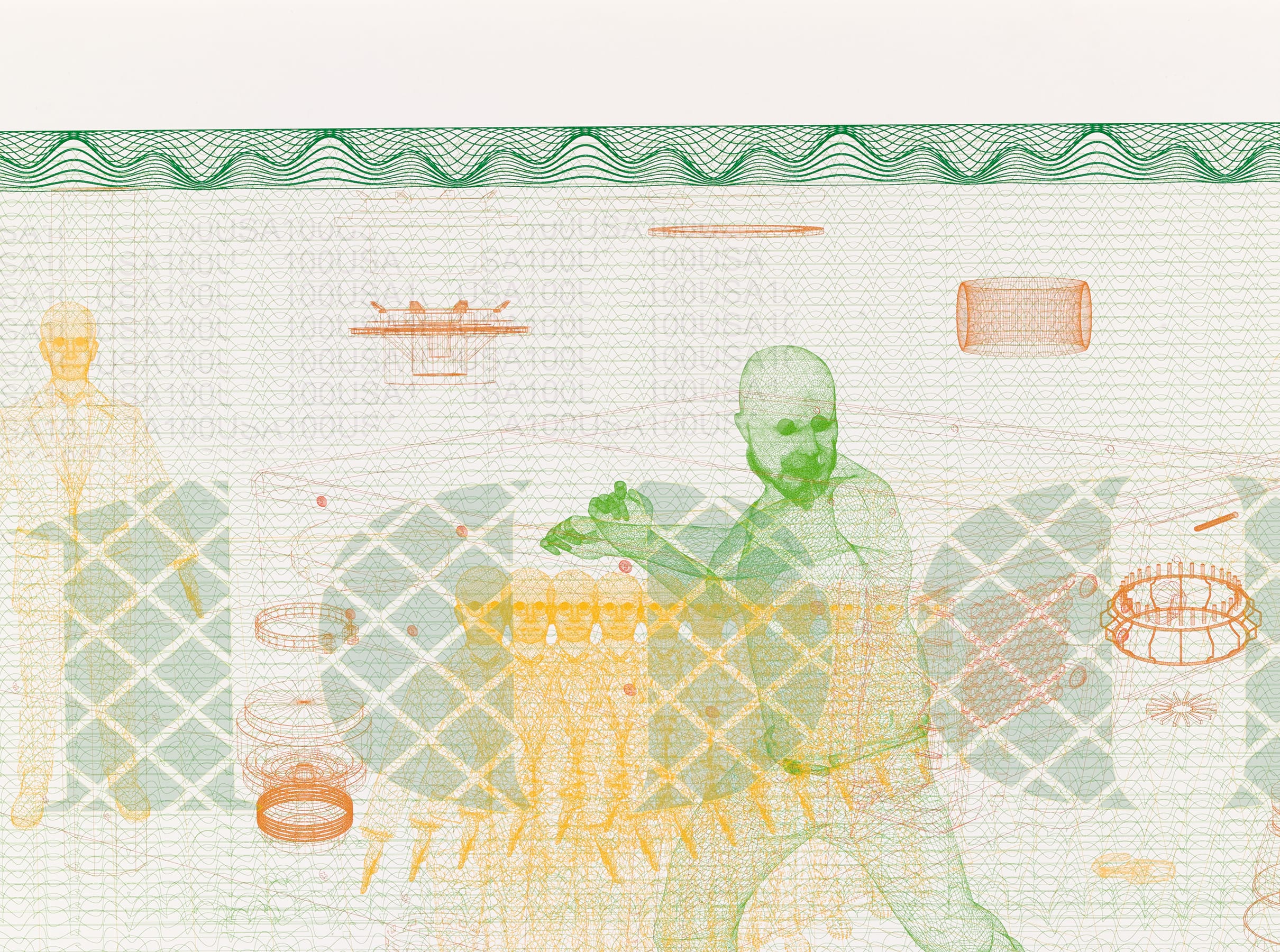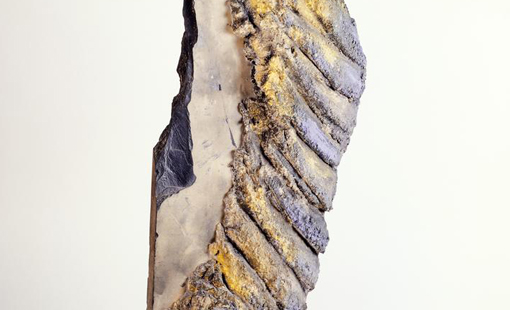
Collection 'Highlights' section updated with three works from the exhibition '(Un)common Values'
For the latest update of the ‘Highlights’ subsection of the Collection, which regularly features selected works from it, we have chosen three works included in the (Un)common Values exhibition, which can be visited until September 18 at the exhibition area set up by the National Bank of Belgium (NBB)![]() at its headquarters in Brussels. The exhibition has been organised to mark the 50th anniversary of the creation of the bank's art collection, and it brings together a broad selection of contemporary pieces from its vaults and our own. The idea is that works of art are not static, merely decorative objects but can help us take a critical look at our present by highlighting, questioning and validating prevailing paradigms and ideologies in the historical context in which they are set.
at its headquarters in Brussels. The exhibition has been organised to mark the 50th anniversary of the creation of the bank's art collection, and it brings together a broad selection of contemporary pieces from its vaults and our own. The idea is that works of art are not static, merely decorative objects but can help us take a critical look at our present by highlighting, questioning and validating prevailing paradigms and ideologies in the historical context in which they are set.
One of the works from the Banco de España Collection on show is the sculpture Untitled (1984) by San Sebastián-born Cristina Iglesias, winner of the National Award for Plastic Arts in 1999 and of the Grand Prize for the best living artist at the 2009 edition of ARCO. It dates from relatively early in her career, in the years before her exploration of expanded dimensions in sculpture led her to start producing installations. In it, she explores the contrasting textures and colours of a material that has been used since Roman times thanks to its architectural flexibility: cement. The piece is a sort of sculpted wing which gives off a great magnetism, perhaps because, to quote Isabel Tejada, "it seems to conceal geological and palaeontological echoes".
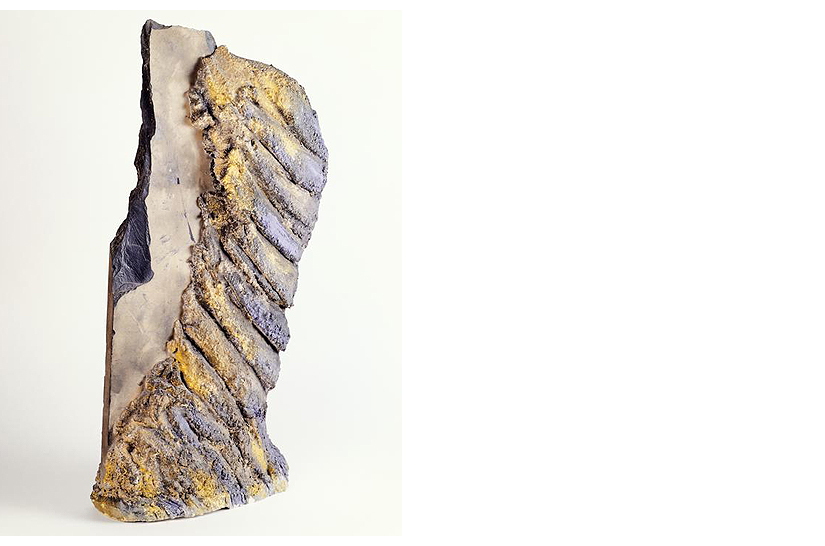 Cristina Iglesias: Untitled (1984)
Cristina Iglesias: Untitled (1984)
Our collection contains two more works by Cristina Iglesias: Untitled (Athens II) (1991) and Diptych IV (1999). The first is a mural sculpture that emerges from the vertical plane like an eave and invites viewers to stand under it. The artist is playing with an idea that can be found widely in her output: an attempt to break with the conventional position of the spectator in exhibition spaces. In Diptych IV, Iglesias also places the spectator centre-stage, this time by using photos screen-printed on copper to construct a space that is both enveloping and hostile, oppressive and unfathomable.
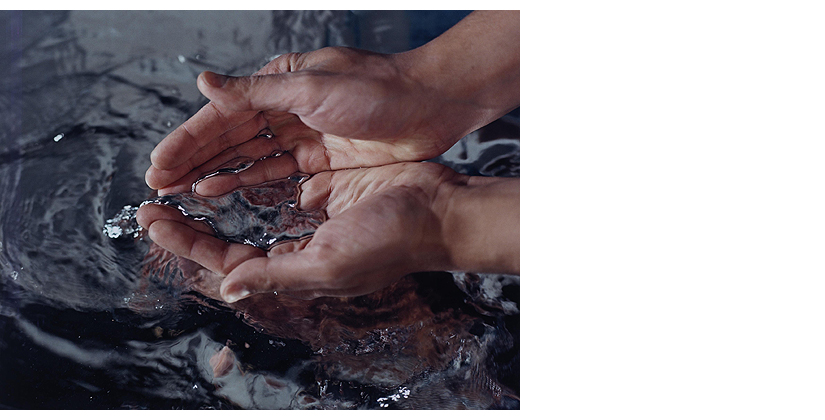 Joâo Maria Gusmâo & Pedro Paiva: Mercury (2009)
Joâo Maria Gusmâo & Pedro Paiva: Mercury (2009)
Exploration of the limits of perception is key in the work of Joâo Maria Gusmâo and Pedro Paiva, two Portuguese artists who use what they call "poetic/philosophical fictions" to place viewers in an undefined area somewhere between the real and the artificial. Connecting a wide range of different concepts (from the pre-Socratic atomists to the abysmology of René Daumal and including the reflections of Henri Bergson on the interaction between perception and memory and the ‘pataphysics’ of Alfred Jarry), their works often lead to a sort of expanded, manipulated reality that highlights the elusive nature that reality always displays. Mercury (2009), the work by them from our collection, and the other two on show here, Tartaruga e papagaio estranho (2011) and Seasoned Egg (2013), included in (Un)common values are a case in point. In an exercise in strangeness that reveals how porous the limits between the ordinary and the extraordinary can be, an inoffensive everyday gesture (cupping one's hands to collect water) takes on a disconcertingly threatening quality.
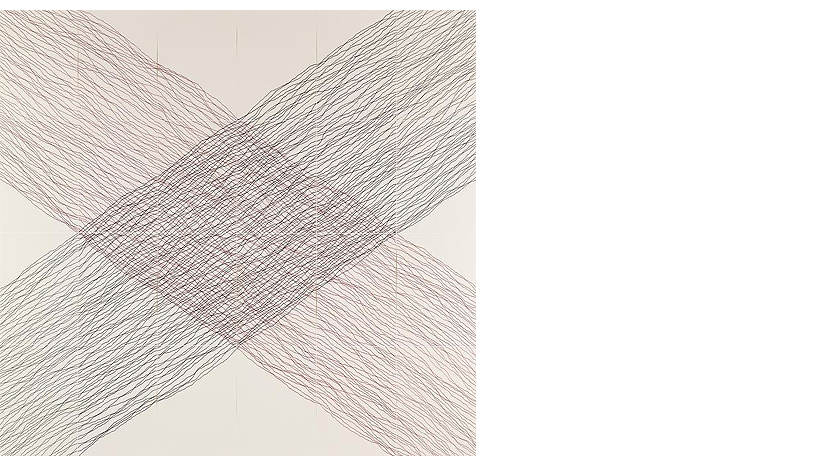 Ignacio Uriarte: Strong Upper and Downer (2013)
Ignacio Uriarte: Strong Upper and Downer (2013)
Our last selection is Strong Upper and Downer (2013), by Ignacio Uriarte, a "late bloomer" who seeks to include in his style the knowledge and even the routine methods (with all that they involve) that he acquired in his years as a clerk at corporations such as Siemens, Canon, Interlub and Agilent Technologies. Influenced by op art, Uriarte creates complex visual effects in his works, though they are always based on a simple, clean form of expression with great emphasis on manual execution.
Strong Upper and Downer takes the form of a polyptych made up of 24 sheets of paper containing a web of typed characters that spectators recognise as percentage signs as they get closer. It is part of a series of works in which he levels a direct but subtle criticism (indeed, it is invisible to anyone not paying close attention) to the world of the market and its predatory logic. The Banco de España Collection also has another work by Uriarte: White Rhombus (2011). Its title refers precisely to what is not drawn, extending his reflection on the notion and experience of emptiness (the emptiness linked to routine working time, but also the emptiness turned into horror vacui that is caused by the forced productivism that prevails in the world of art). As stated by Jorge Pallaré, that reflection is one of the cardinal points of Uriarte's work.
